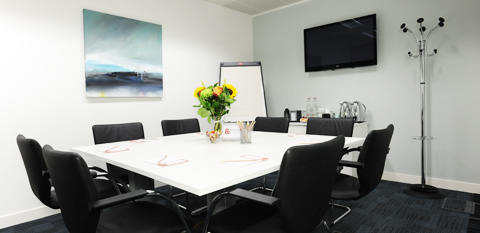Why hired conference centres will be bigger than ever in 2014
The world of business is a very different place to what it was as recently as a decade ago, amid advances in technology and some of the newer trends that have emerged since the beginning of the financial crisis.
This has had a profound influence on the way that business meetings are held. What would once have simply been a monthly gathering within a firm’s office has developed into a much more complex operation and there are a host of reasons why this is the case.
SMEs
For new businesses, the purse strings need to be kept as tight as possible to contend with the continued pressures of the financial crisis. Spending too much before a start-up has established a stable customer base – and sales revenue – can lead to serious cash flow problems and could ultimately spell the end for a firm before it has kicked into gear.
Building an on-site meeting room that will impress clients and provide an optimised space for employees is costly and will not provide a viable return on investment in the short term.

This is why more and more SMEs are choosing the reactive solution of hiring out meeting rooms or conference centres as and when they are needed. It ensures that offices aren’t lumbered with extra facilities that go largely unused and can be a welcome shortcut to the often lengthy process of getting a new enterprise up and running.
Homeworking
Technological advances have made human resourcing a much more flexible process. Rather than having to spend hours every day commuting to an office, workers can simply log into their company account and carry out all the requirements of their job role capably – and sometimes more efficiently – without having to leave the comfort of their home.
This carries a number of advantages for the employee; for example they have the option of moving home without having to give up their job, or it could allow parents to juggle a career and childcare more effectively.
But the employer can also benefit by spending less on office space – something that can provide a significant cash boost given the astronomical fees of rent in prime city centre locations, particularly in London.
With this in mind, it is often a great idea to hire dedicated event spaces when it comes time to get the whole workforce together. The rise of homeworking means that employees may need to be assembled from a wide range of geographical locations. Hiring a meeting room placed in a city centre hub will make it as easy as possible for remote workers to attend and also reinforce the importance of the meeting by creating a ‘sense of occasion’.
Corporate clients
This can apply to clients too. Office spaces are in many cases less corporate than used to be the case, with a focus on creating a relaxed and sociable environment in which employees can thrive on a daily basis.
But the other side of the coin is that when a business is required to play host to a visit from a high-profile corporate client, this may not be the impression that bosses want to give off.
The use of a third-party meeting room can ensure that companies are able to keep their office surroundings as pleasant as possible in order to maintain the motivation of employees, while also providing a professional environment to accommodate clients during meetings – this is of particular use if they are held sporadically as opposed to on a regular day of each month.
Easier to tailor guest list
Another huge advantage is that providers of meeting spaces are likely to have a range of different options available.
In the modern world no two meetings tend to be the same. The content and issues raised in a presentation may only be relevant to some departments, meaning not everyone needs to attend.
Similarly, a particular meeting may apply to all clients, a small selection or even just one. With this in mind, it is best practice to have a collection of meeting rooms with varying capacities at a firm’s disposal.
Having one conference space within an office, which can only fit one capacity, could well be deemed as impractical and inflexible.
Coming up with a detailed plan of the requirements of each meeting based on the client’s needs and the profiles of the individuals who will be on the guest list makes it more likely that all those in attendance will come away with a greater level of satisfaction, and ultimately, a higher opinion of the host company.
Equipment
In the globalised world in which firms operate in 2014, it may simply be the case that it is not possible for partners from the other side of the world to physically attend business meetings.
With developments like Skype and Google Hangouts this is not always a necessity. However, if a meeting needs to be attended by a lot of people, a business requires the broadcasting equipment to support this technology.
Interactive whiteboards, HDMI projectors and a fully-amplified sound system may all be needed to ensure communication via such media remains effective. But once again, this equipment comes at a premium and may simply be out of the price range of SMEs hoping to set up their own facilities.
Hiring a meeting room and specifying to the provider the equipment that will be needed can yield the ideal conference space, with only a one-off rental payment to worry about.
Share this post
Tags
- Career Development
- Celebrity Meetings
- Conferences
- Confidence
- Exhibitions
- Historic Meetings
- How to Interview Effectively
- Human Resources
- In The Press
- Meetings and Conferences
- Monarchy
- News
- Our Team
- Personal Development
- Personnel
- Presentation Techniques
- Teamwork
- Top Tips for Meetings
- Training & Workshops
- Video Conferences



